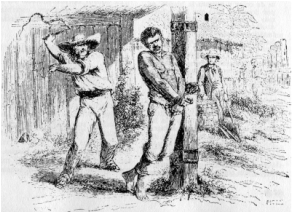
Antonio
Antonio’s story illustrates the history of enslavement in the first century of colonial Maryland.
Timeframe: mid-1600’s
Antonio was captured and sold from the Dutch ship the Witte Paert or White Horse. He ended up being enslaved at St. Mary’s City by Simon Overzee at the St. John’s site in the mid-1600’s. We know something about the pain and suffering experienced by Antonio at the hands of his owner Simon Overzee from testimonies during the Maryland Provincial Court Proceedings 1655. The trial accused Oversee, his enslaver, of murder.
Antonio fiercely resisted his enslavement by refusing to work on Overzee’s new plantation at St. Mary’s and by running away. In the course of “correcting” Antonio’s behavior, Simon Overzee had him beaten and tortured. Antonio soon died. We only know about Antonio’s story because one of Simon Overzee’s political enemies had him prosecuted for manslaughter. Simon Overzee was acquitted.
The Maryland Provincial Court decided that Overzee’s brutal actions were legal. He was acquitted and released because of limited proof. No one could prove that Simon Overzee had punished Toney (Antonio) more than he was allowed.
Why is this important? This event shows us how early, in colonial history, the law favored the rights of white plantation owners over their slaves.
Additional Resources
Find out more: Read the details of this case in the Maryland Provincial Court Proceedings of 1655.
Historic St. Mary’s City – St. John’s site St. John’s Site – Research – Historic St. Mary’s City – A Museum of History & Archaeology at Maryland’s First Capital (hsmcdigshistory.org)
The 17th-century Origins of Slavery in Maryland, YouTube lecture. Travis Parno, Ph.D. and Director of Research at Historic St. Mary’s City, shares the story of Antonio, an enslaved African, to illustrate the history of enslavement in the first century of colonial Maryland. https://youtu.be/BzujHIdZLac
